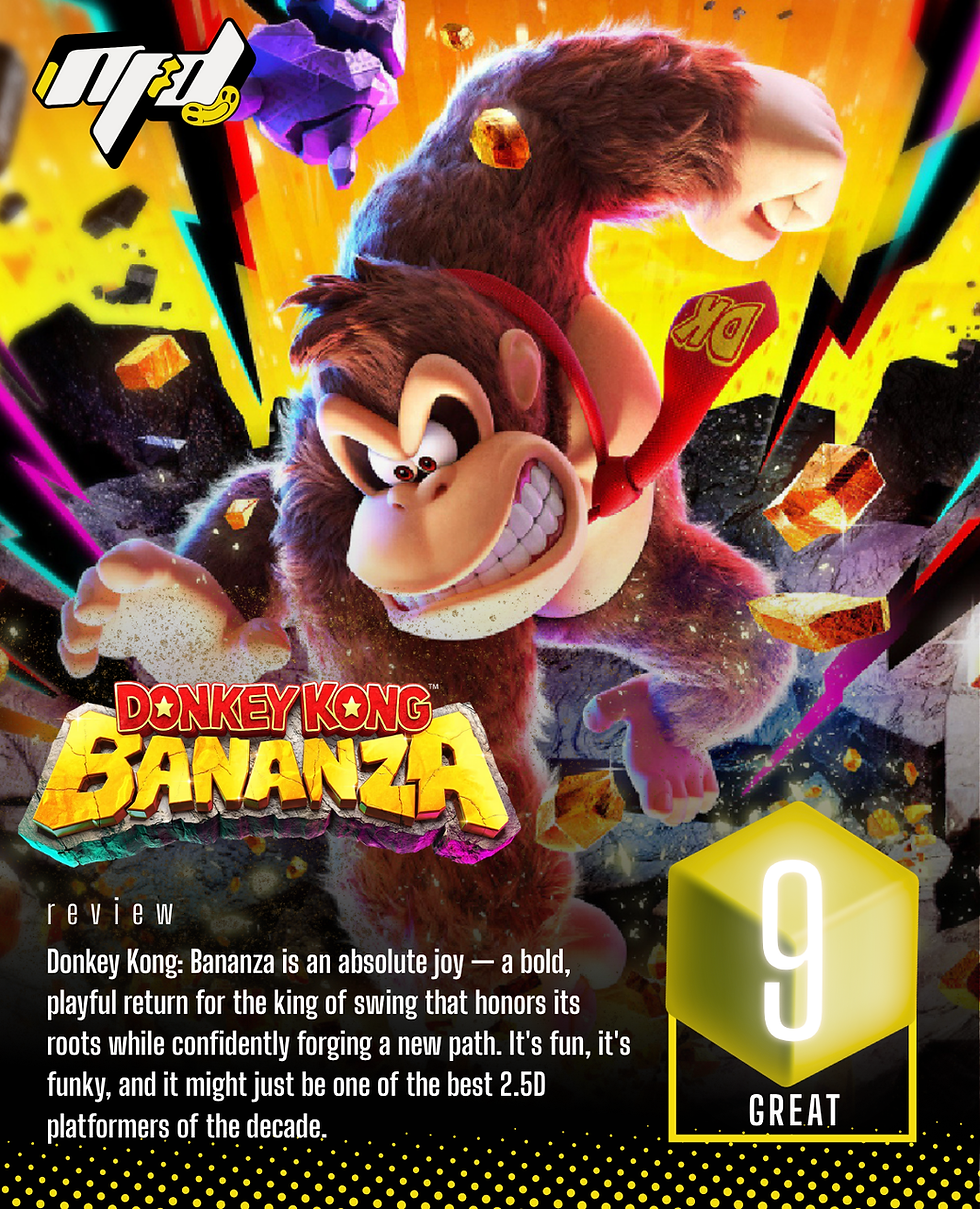Destiny 2: The Edge of Fate Review Eyes Low Guardian
- NFD NEWS

- Jul 28
- 4 min read
Score: 6.5/10 — Ambitious storytelling tangled in frustrating systems

After wrapping up The Final Shape, Bungie had an opportunity to reshape the Destiny universe. The Edge of Fate arrives as the first chapter in a new saga, shifting the narrative focus to the mysterious realm of the Nine and introducing a bold direction in story, systems, and structure. But while its narrative reaches for cosmic grandeur, the gameplay loop stumbles—making for a divisive experience that’s both intriguing and exhausting.

📖 Story and Setting — A New Cosmic Chapter
The campaign kicks off on Kepler, a new planetoid cloaked in mystery and governed by the Nine. You guide a new character named Lodi, a Guardian chosen for reasons that slowly unravel throughout the campaign. As darkness closes in, themes of memory, fate, and choice come to the forefront. The nonlinear mission design allows players to explore sections in any order, and the character writing—especially around the Nine and their fractured influence—is among the strongest Bungie has delivered in years.
Lore enthusiasts will be thrilled. There are deep ties to existing mythology, wild expansions of the Nine’s role in the universe, and revelations that suggest the next major conflict will be more existential than physical.
Still, the campaign ends too soon. Despite its strengths, it lacks the explosive set-piece moments and standout missions that defined previous expansions like The Witch Queen or The Final Shape. It feels more like a prologue than a proper new beginning.

🧭 Kepler and the Exploration Systems
Kepler itself is an intriguing but underwhelming environment. Its design is heavily inspired by Metroidvania principles: paths are locked behind ability upgrades, backtracking is required, and platforming plays a major role in progression. While the traversal powers—such as the Matterspark dash and Matterweave grapple—add fun mobility options, the world never feels as alive or compelling as Savathûn’s Throne World or the Dreaming City.
Exploring Kepler can feel both magical and repetitive. The traversal mechanics are clever, but frequent gating, reused enemy placements, and lackluster environmental storytelling make the world feel more like a puzzle box than a living ecosystem.

🛠️ Gear and Systems Overhaul — Power or Punishment?
Armor 3.0 introduces a six-stat system and set bonuses tied to loadouts, while weapons now range from Tier 1 to Tier 5, each with escalating perks and diminishing returns. In theory, this offers build diversity and long-term investment. In practice, it resets progress for longtime players and imposes steep grind walls for modest gains.
Many fan-favorite exotics and loadouts have been “depowered” under the new system. Paired with an aggressively limited ammo economy and a convoluted UI for gear management, it’s easy to feel like you're fighting the systems more than the enemies.
Leveling has also changed, moving toward a gear-score–based system more akin to traditional MMOs. Unfortunately, the lack of meaningful gear drops and the randomness of upgrades make leveling feel like a chore rather than a journey.
🌀 Activity Flow — Portal Overload
The new Portal system, a hub that allows players to choose from rotating events, strikes, and seasonal content, is functional but uninspired. While it simplifies navigation, it comes at the cost of immersion. Gone are the wide-open spaces and emergent encounters; in their place is a sterile UI that makes Destiny feel more like a game menu than a shared world.
The lack of traditional open patrol zones, world events, and spontaneous social activity drains the soul out of the sandbox. Destiny has always thrived on the tension between structure and chaos—Edge of Fate leans too far into the former.

🔫 Core Gameplay and Combat
Bungie’s gunplay remains as sharp as ever. Shooting feels excellent, and the moment-to-moment action continues to set the bar for the looter-shooter genre. However, without a new subclass or major gameplay mechanic like Strand or Stasis, the combat loop lacks freshness. Modifier-based challenge modes and randomized perks offer replayability, but there’s a noticeable absence of innovation.
🎨 Art and Sound Design
Visually, The Edge of Fate is a mixed bag. Kepler’s design carries eerie sci-fi vibes but lacks standout landmarks or biome diversity. It’s atmospheric but forgettable. Enemy design has seen minor tweaks, though most models are recycled.
The audio work remains strong—ambient tracks are haunting, weapon sounds are punchy, and voice acting (especially among the Nine) delivers both menace and intrigue.
🛡️ The Raid: Desert Perpetual
Launching shortly after the expansion’s release, the Desert Perpetual raid is the bright spot. Set within the Nine’s fragmented realm, it features shifting arenas, logic puzzles tied to prophecy, and boss mechanics that emphasize precision and coordination. Early impressions suggest it may become one of Destiny’s most creatively designed raids—though time will tell if its narrative payoff sticks the landing.
📉 Community Reception
While some players appreciate the expansion’s ambitious narrative and experimental mechanics, many are voicing frustration with the gear systems, leveling curve, and the lack of immediate reward. Compared to the excitement around The Final Shape, engagement numbers are lower, and conversation is more critical.
For some, The Edge of Fate feels like Destiny’s next chapter. For others, it feels like the start of something uncertain and uninviting.

🧾 Final Verdict
The Edge of Fate is full of ideas. Some of them are bold. Some are frustrating. And some simply don’t work yet. It’s a thoughtful, lore-rich prologue to a new era—but it arrives with systems that alienate as much as they innovate.
If you’re in it for the story, the campaign is worth the ride. But if you're here for the loot, the grind, and the build-crafting, be prepared for an uphill battle.
Final Score: 6.5 / 10Pros:
Strong story and lore
Innovative traversal powers
Great raid design
Cons:
Punishing gear progression
Weak open world design
Frustrating inventory and leveling systems












Comments